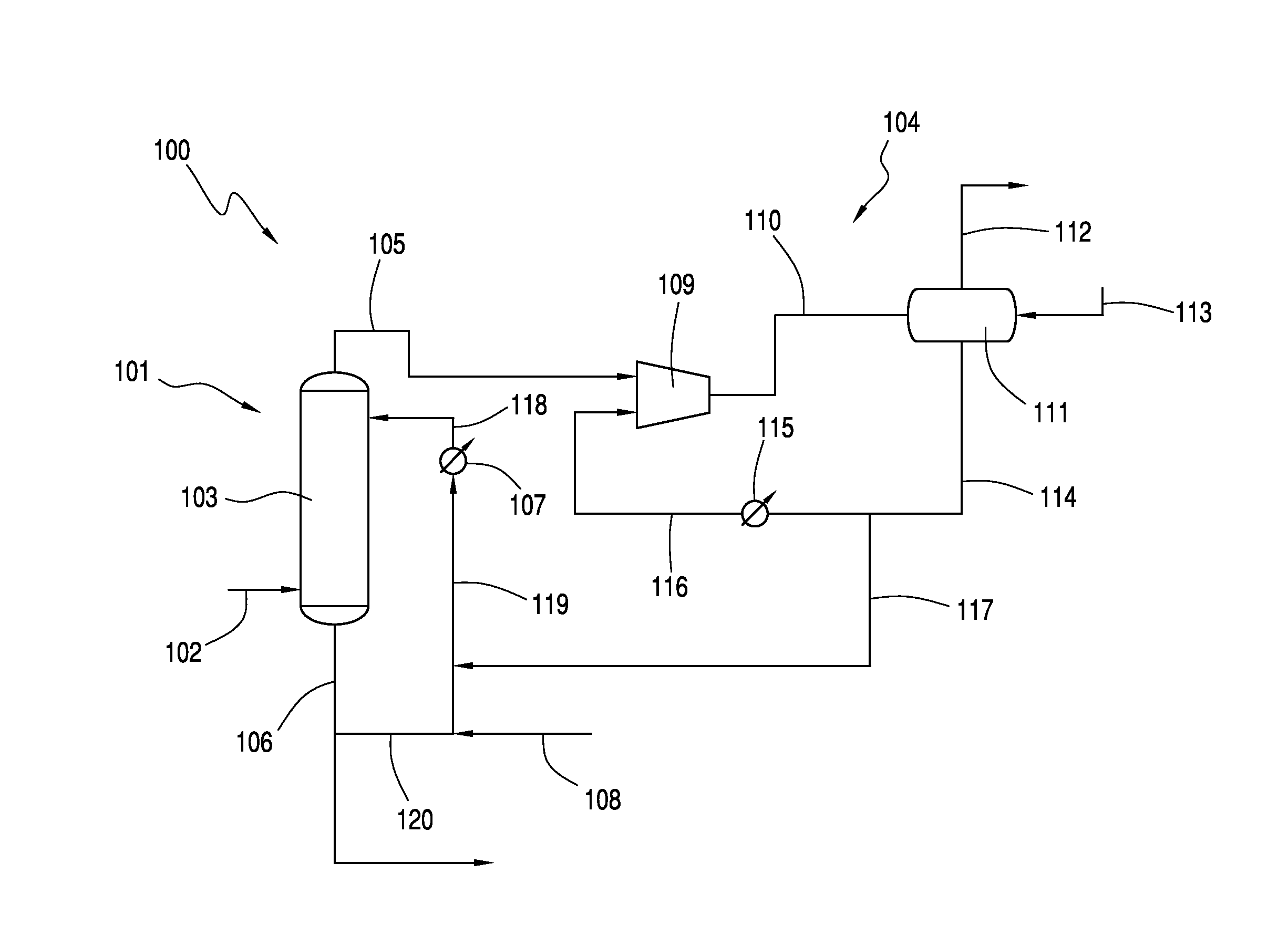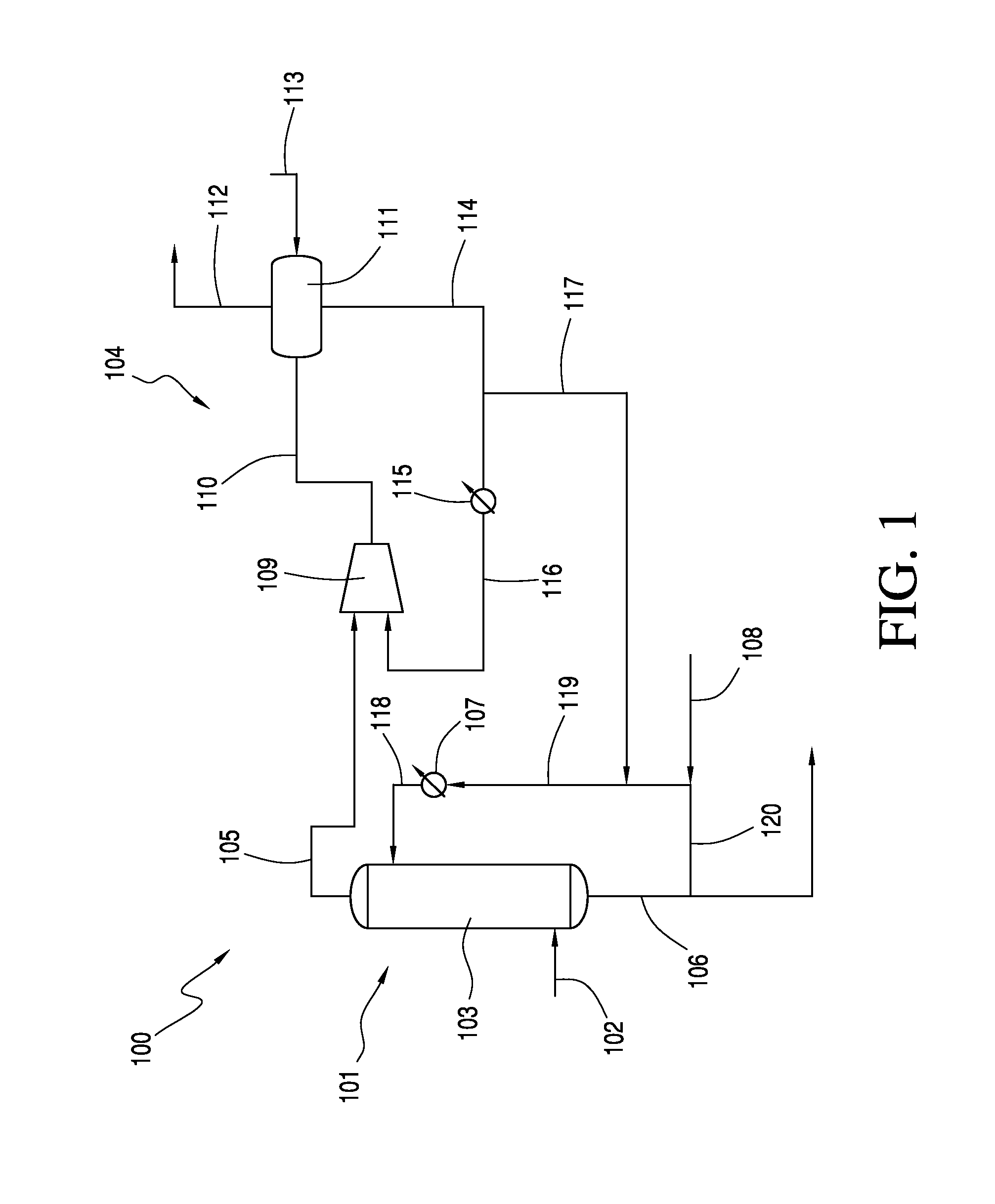Processes for Preparing Acetic Anhydride
a technology of acetic anhydride and process, applied in the preparation of carboxylic compounds, organic chemistry, carbon monoxide reaction carboxylic preparation, etc., can solve the problems of increasing the energy requirements of the process as a whole, significant capital expenditure of components,
- Summary
- Abstract
- Description
- Claims
- Application Information
AI Technical Summary
Benefits of technology
Problems solved by technology
Method used
Image
Examples
Embodiment Construction
Introduction
[0009]The production of acetic anhydride via the reaction between acetic acid and ketene is conventionally carried out in a system which includes an absorber and at least one ketene scrubber. The process requires the use of both an absorber and at least one scrubber to achieve the desired overall conversion of ketene to acetic anhydride and subsequent carbon efficiency. These components and the use thereof, unfortunately, represent significant process expenses.
[0010]It has now been discovered that at least a portion of the vent gas from the absorber, instead of being directed to a costly ketene scrubber or series of scrubber towers, may be directed to a liquid ring vacuum compressor comprising a ring seal fluid comprising acetic acid. In one embodiment, a small number of liquid ring vacuum compressors are employed, e.g., less than 3 or less than 2. Preferably, a single liquid ring vacuum compressor is used. By utilizing only a few (or only one) liquid ring vacuum compres...
PUM
| Property | Measurement | Unit |
|---|---|---|
| wt % | aaaaa | aaaaa |
| wt % | aaaaa | aaaaa |
| wt % | aaaaa | aaaaa |
Abstract
Description
Claims
Application Information
 Login to View More
Login to View More - R&D
- Intellectual Property
- Life Sciences
- Materials
- Tech Scout
- Unparalleled Data Quality
- Higher Quality Content
- 60% Fewer Hallucinations
Browse by: Latest US Patents, China's latest patents, Technical Efficacy Thesaurus, Application Domain, Technology Topic, Popular Technical Reports.
© 2025 PatSnap. All rights reserved.Legal|Privacy policy|Modern Slavery Act Transparency Statement|Sitemap|About US| Contact US: help@patsnap.com


